Sax Powerhouse Tim Lin Teaches Melodic Shapes for the Modern Improvisor

Introduction
I recently had the chance to speak with San Francisco Bay Area sax pro, Tim Lin, and he was nice enough to share some examples of melodic shapes, which I believe could benefit any player, whether they are beginning or advanced. My hope is that the exercises included in this article will be a welcome addition to your practice routine, especially if you’ve found yourself focusing a bit more on practice, perhaps due to additional free time at home as we go through this challenging time, weathering a pandemic that has the music world grinding to a halt.
These examples I am sharing are from Tim’s book Melodic Shapes For The Modern Improviser – exercises which I hope you can take advantage of and incorporate into your practice routine. If you have not yet checked Tim out, below are some details to get you up to speed.
Bio
- Born in Fremont, California, Tim Lin is a Taiwanese-American jazz talent whose progressive sound comes from his love of the bebop jazz tradition and history.
- During Tim’s early years he studied with bay area saxophonist and educator Dann Zinn.
- Under Zinn’s guidance helped Tim develop his craftsmanship of daily practice further helping him discover his passion for jazz and calling to become a musician.
- Tim received a scholarship to study with the world-renowned jazz recording artist Bob Sheppard at the University of Southern California Thornton School of Music.
- During his college years in Los Angeles, Tim was a member of the award winning USC Thornton Jazz Orchestra lead by Bob Mintzer, in addition to the USC Honors Combo directed by Jason Goldman.
- Tim was the first runner up for the International Taichung Saxophone Competition behind Tivon Penicott.
- Tim was also a finalist in the 2018 Thelonious Monk Institute College Program (Herbie Hancock Institute of Jazz) where he performed for Wayne Shorter, Herbie Hancock, Ambrose Akinmusire, and Herb Albert.
- Tim has performed with jazz luminaries such as Kenny Burrell, Tootie Heath, Russell Ferrante, Terri Lyne Carrington, Carl Allen, Mike Clark, Essiet Okon Essiet, among others.
- Tim has been mentored by some of the greatest tenor saxophonists of our generation including Bob Sheppard, Bob Mintzer, Larry Schneider, and is currently a student of Jerry Bergonzi.
- Currently splitting his time between New York City, Boston, San Francisco, and Taiwan, Tim is an active jazz artist & freelance musician, educator, author, and composer on the scene.
- Tim’s debut record entitled “Romance in Formosa” was produced by Bob Sheppard, featuring Andy LaVerne on piano, Jay Anderson on bass, and Billy Drummond on drums. Purchase a copy of his new record HERE.
- Sophomore recording December 2022 forthcoming.
How To Practice These Examples:
- Play slowly and learn the shape or “lick” in an easy key (such as C). Once learned, play this shape in all 12 keys. For advanced players, try to transpose each shape by ear instead of reading off the page.
- Insert this shape into a common 12 bar blues progression (remember to play it slowly!)
- Insert this shape into a common jazz standard. Leverage this shape to create tension and release within the harmony.
- Move away from these lines and play your own ideas
I will be providing one shape or “lick” from each section of Tim’s book which is broken up into 6 sections
Example #1: Two Bar II-V-I in Major Key
Overview: Here is a simple two bar II-V-I that leverages chromaticism.
Click here to download the PDF for Exercise 1
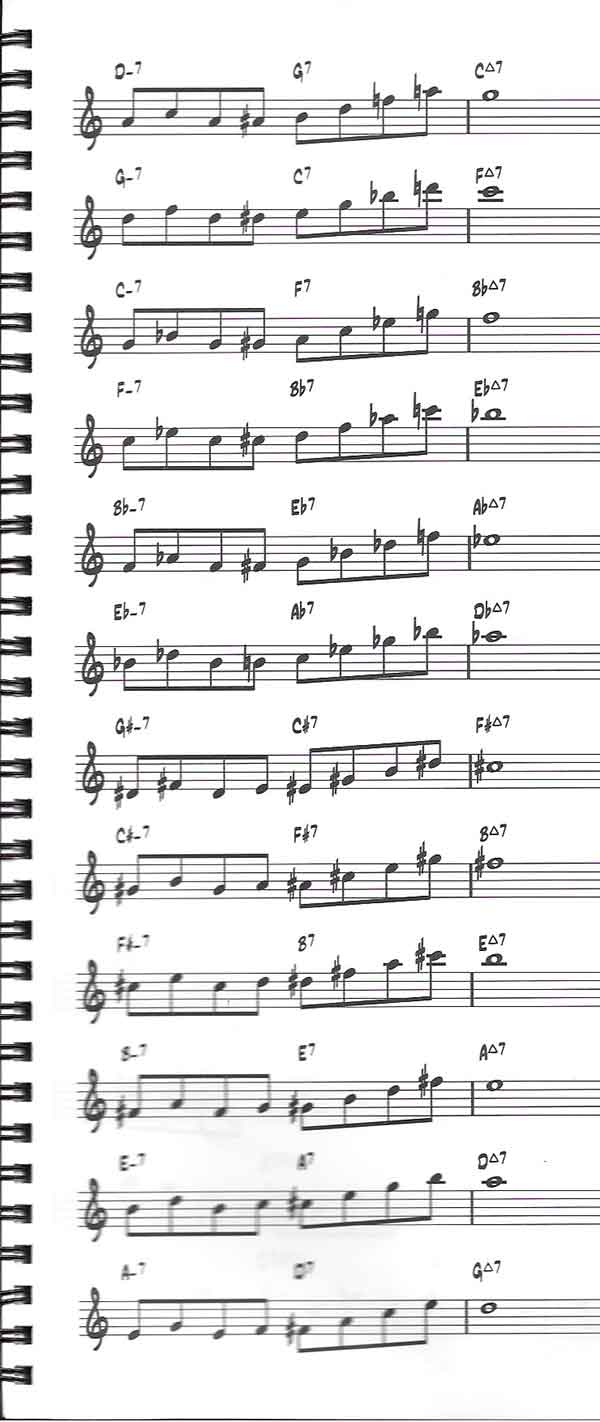
Example #2: Four Bar II-V-I in Major Key
Overview: This four bar II-V-I showcases the altered notes that are high-lighted in red on the V chord being the b9, #9, and b13.
Click here to download the PDF for Exercise 2
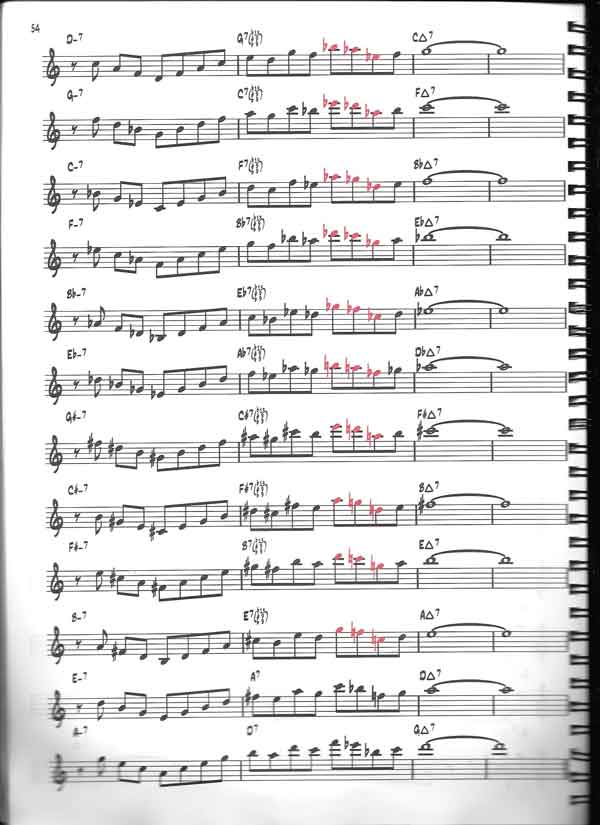
Example #3: Two Bar II-V-I in Minor Key
Overview: This two bar minor II-V-I highlights the b9 (noted in red) on the V chord.
Click here to download the PDF for Exercise 3
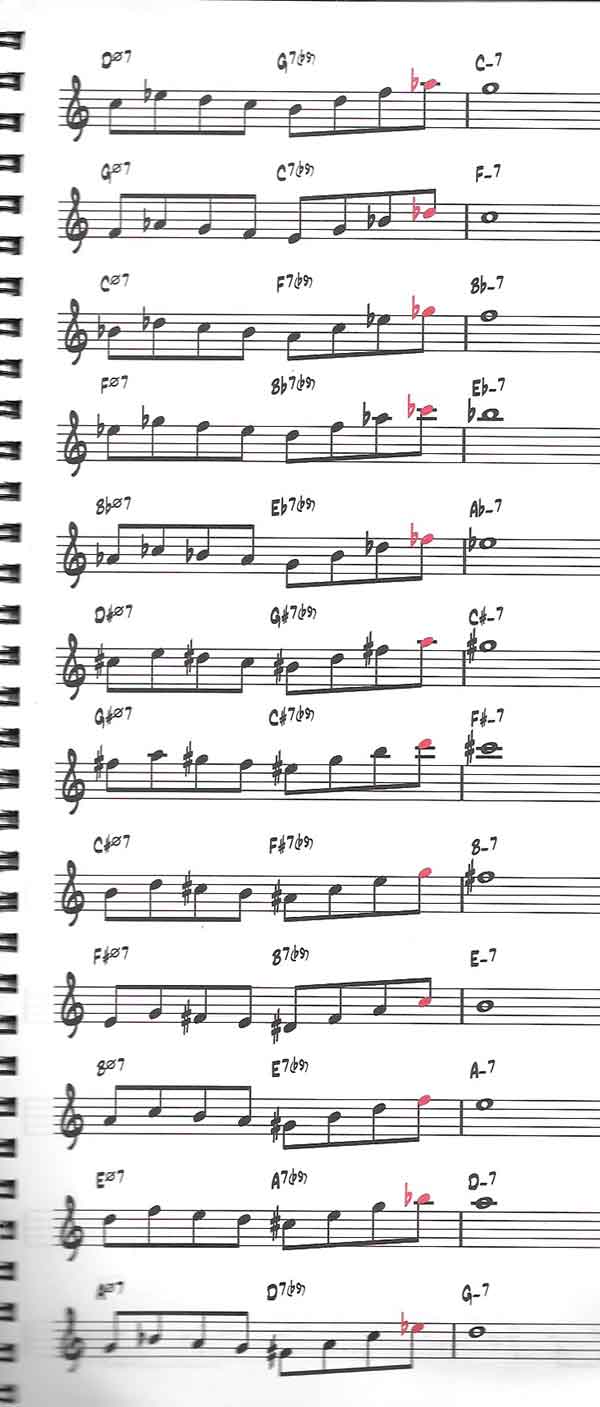
Example #4: Four Bar II-V-I in Minor Key
Overview: This four bar minor II-V-I showcases the altered notes that are high-lighted in red on the V chord being the b9, #9, and b13.
Click here to download the PDF for Exercise 4
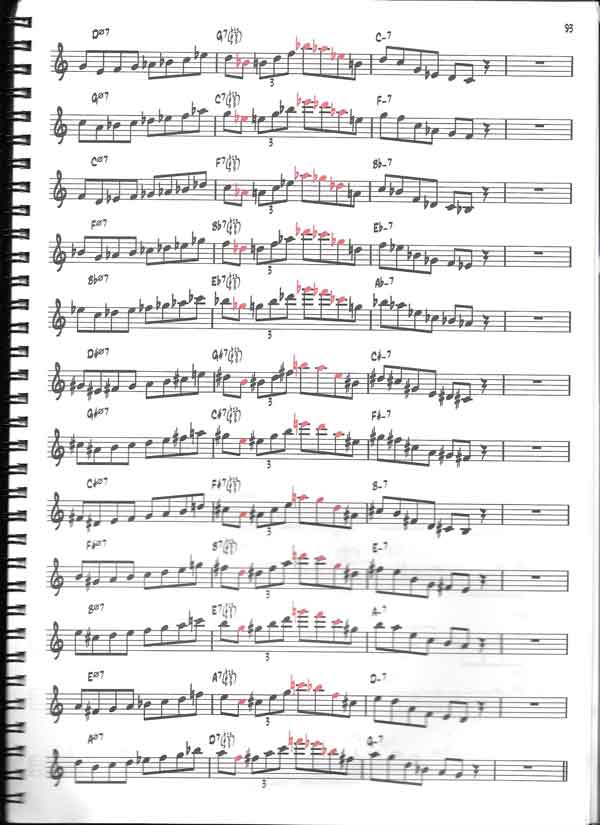
Example #5: Two Bar Diminished in Major Key
Overview: This two bar diminished phrase showcases the diminished scale leveraging triplets and resolving on the 3rd of the I chord.
Click here to download the PDF for Exercise 5
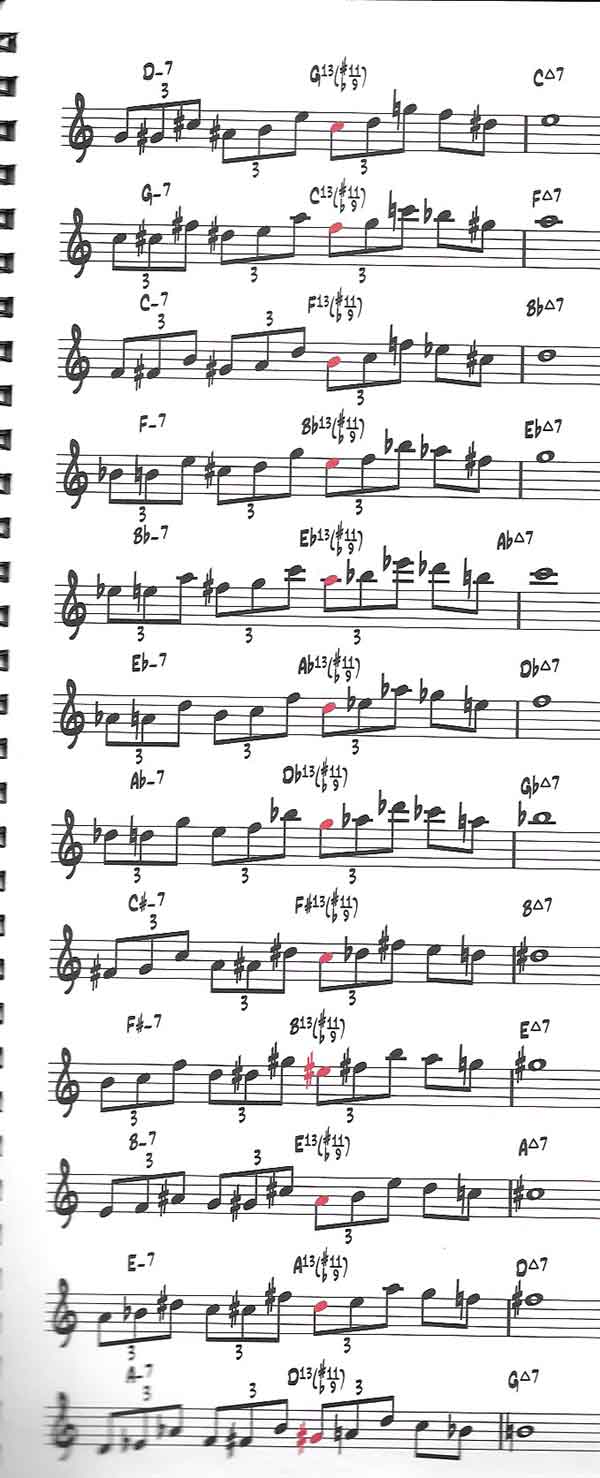
Example #6: Four Bar Diminished in Major Key
Overview: This four bar diminished phrase showcases the diminished scale descending and resolving on the 5th of the I chord.
Click here to download the PDF for Exercise 6
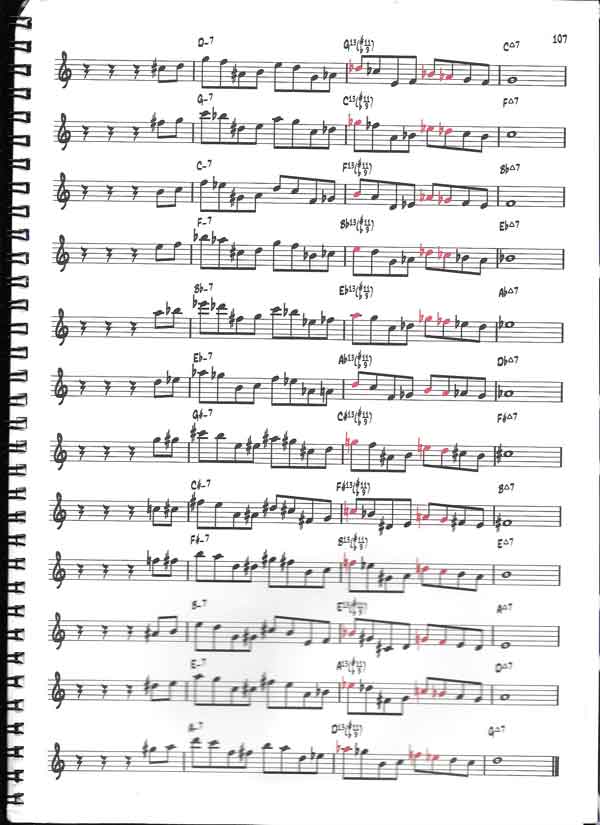
Final Thoughts
I would like to thank Tim for sharing these melodic shapes which can be found and much more in Tim’s book Melodic Shapes For The Modern Improviser . Like any book or material, I highly recommend playing through these exercises slowly, which I believe will help you further absorb this material with the ultimate goal of creating your own lines and phrases.
If you currently have been working through Tim’s book, please share your thoughts (would be curious to know which was your favorite exercise in the book!).
If you are interested in checking out more melodic shapes from Tim’s book, please check out his website where you can use the code BESTSAX to receive 20% off your purchase (physical or e-book).






GS Mouthpieces: Do These Replicas Compare To The Real Thing? » Best. Saxophone. Website. Ever.
February 19, 2022 @ 7:28 am
[…] have been fortunate to be able to test play a few Reso Chambers from my buddy and great saxophonist Tim Lin which were originals as well as refaced and played […]
Geeking Out at the Boston Sax Shop and Virtuosity Musical Instruments » Best. Saxophone. Website. Ever.
December 6, 2022 @ 7:18 am
[…] Action Tenor (a “special guest”) – While at the shop, I was lucky to run into Tim Lin who was visiting Boston. I have known Tim Lin (Instagram:@timlinbebop) since I moved out to the Bay […]
"Bebop Sax Shop" Aims to be NYC's Next Vintage Sax Epicenter » Best. Saxophone. Website. Ever.
January 29, 2023 @ 8:21 am
[…] Tim Lin’s saxophone obsession started in sixth grade when his father rented him his first saxophone. After Tim discovered John Coltrane’s recordings in high school, jazz became his passion and life’s calling. Mentored by many world-class jazz saxophonists such as Bob Sheppard, Bob Mintzer, Jerry Bergonzi, and Larry Schneider, Tim developed his talent through their guidance and endless hours of practice. […]
The Art of Mouthpiece Refacing with Thomas Occhiuto » Best. Saxophone. Website. Ever.
February 20, 2023 @ 7:09 am
[…] while meeting up with Tim Lin, saxophonist and owner of The Bebop Sax Shop, I had the opportunity to try some of his Dukoff […]